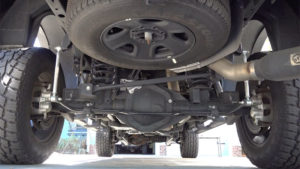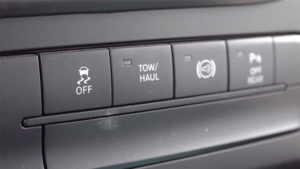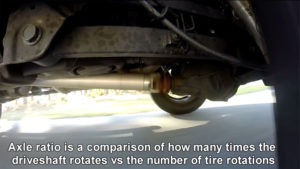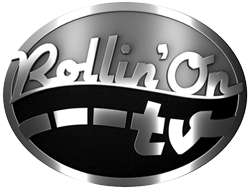rv Education 101
RV Education 101 -Understanding How Towing affects the Tow Vehicle
Mark Polk: Hi, I’m Mark Polk with “RV Education 101,” and I would like to welcome you to “RV 101 Understanding Your RV.” Today’s topic is understanding a vehicle’s powertrain and how towing affects it. Let’s start right now.
 Let’s start by explaining what a vehicle powertrain is. The powertrain on a rear-wheel drive vehicle like this includes every component required to get the power from the engine to the rear axle. The vehicle’s engine is rated by horsepower and torque. To get that torque to the vehicle’s rear wheels require several components in the vehicle’s drive train. First, the power leaving the engine goes to the transmission. In this case, it’s an automatic transmission. The transmission provides you with a variety of gear ranges based on the speed and torque for the driving conditions. Most modern-day vehicles used for towing or hauling heavy loads will have a tow/haul mode. If you are towing, and the transmission keeps shifting in and out of gears, you can use the tow/haul mode. Read your owner’s manual for more information on tow/haul and gear selection when towing.
Let’s start by explaining what a vehicle powertrain is. The powertrain on a rear-wheel drive vehicle like this includes every component required to get the power from the engine to the rear axle. The vehicle’s engine is rated by horsepower and torque. To get that torque to the vehicle’s rear wheels require several components in the vehicle’s drive train. First, the power leaving the engine goes to the transmission. In this case, it’s an automatic transmission. The transmission provides you with a variety of gear ranges based on the speed and torque for the driving conditions. Most modern-day vehicles used for towing or hauling heavy loads will have a tow/haul mode. If you are towing, and the transmission keeps shifting in and out of gears, you can use the tow/haul mode. Read your owner’s manual for more information on tow/haul and gear selection when towing.
 From the transmission, the power is delivered to the rear axle by way of the driveshaft. The axle uses a pinion and ring gear to get the power to both rear wheels. Axles come with different gear sets, which is typically referred to as the axle ratio. The axle ratio is a comparison of how many times the driveshaft rotates in relationship to how many times the rear wheels rotate. Axle ratios are expressed in numeric values. For example, a 3:73:1 axle ratio means the driveshaft or pinion gear rotates 3.73 times for each rotation of the wheels, or the ring gear. The lower the numeric value is, the better the axle is for fuel economy, and the higher the numeric value is, the better the axle is for towing.
From the transmission, the power is delivered to the rear axle by way of the driveshaft. The axle uses a pinion and ring gear to get the power to both rear wheels. Axles come with different gear sets, which is typically referred to as the axle ratio. The axle ratio is a comparison of how many times the driveshaft rotates in relationship to how many times the rear wheels rotate. Axle ratios are expressed in numeric values. For example, a 3:73:1 axle ratio means the driveshaft or pinion gear rotates 3.73 times for each rotation of the wheels, or the ring gear. The lower the numeric value is, the better the axle is for fuel economy, and the higher the numeric value is, the better the axle is for towing.
Under normal driving conditions, all of these components do their individual jobs with very little stress and with operating temperatures in the normal ranges. When you add additional weight to the vehicle like a travel trailer or fifth-wheel trailer, the components we just discussed are expected to do the same job as before with the added weight and stress on the components. Let’s see what happens under this scenario. With additional weight comes more heat and friction as the driveline does its job. When the coolant, oil, and fluids run hotter than normal, it’s more difficult to lubricate the metal-on-metal components, causing increased friction and wear. This is why truck manufacturers offer tow packages. To counter the effects of the added stress and to optimize towing, a tow package offers things like a heavy-duty cooling system, engine oil coolers, and transmission coolers. Many go even further and provide an upgraded suspension system, larger brakes, a built-in trailer brake controller, and tow mirrors.
 And when you use the proper hitch components like a weight-distributing hitch, it helps lessen the stress on the powertrain when you’re towing a trailer. You can see how a tow package is designed to help deal with the added heat and stress placed on the vehicle’s powertrain, but possibly the most important thing we as owners can do is make sure the engine coolant, oil, fluids, and all the filters are replaced on a regular schedule. Fresh oil, fluids, and filters provide the highest degree of lubrication qualities and are the best defense against heat, friction, and stress on the powertrain components.
And when you use the proper hitch components like a weight-distributing hitch, it helps lessen the stress on the powertrain when you’re towing a trailer. You can see how a tow package is designed to help deal with the added heat and stress placed on the vehicle’s powertrain, but possibly the most important thing we as owners can do is make sure the engine coolant, oil, fluids, and all the filters are replaced on a regular schedule. Fresh oil, fluids, and filters provide the highest degree of lubrication qualities and are the best defense against heat, friction, and stress on the powertrain components.
Happy camping from Mark Polk of RV Education 101


